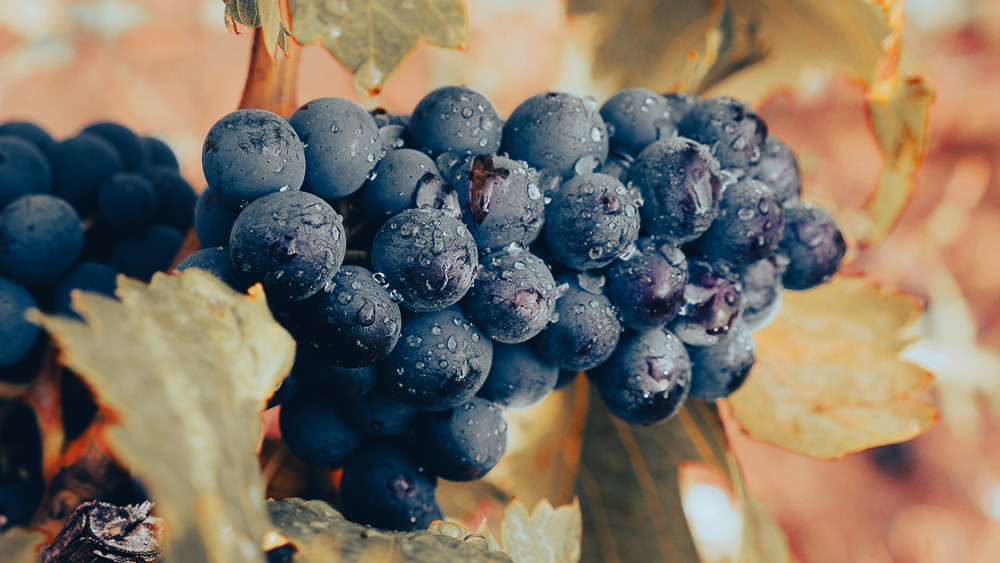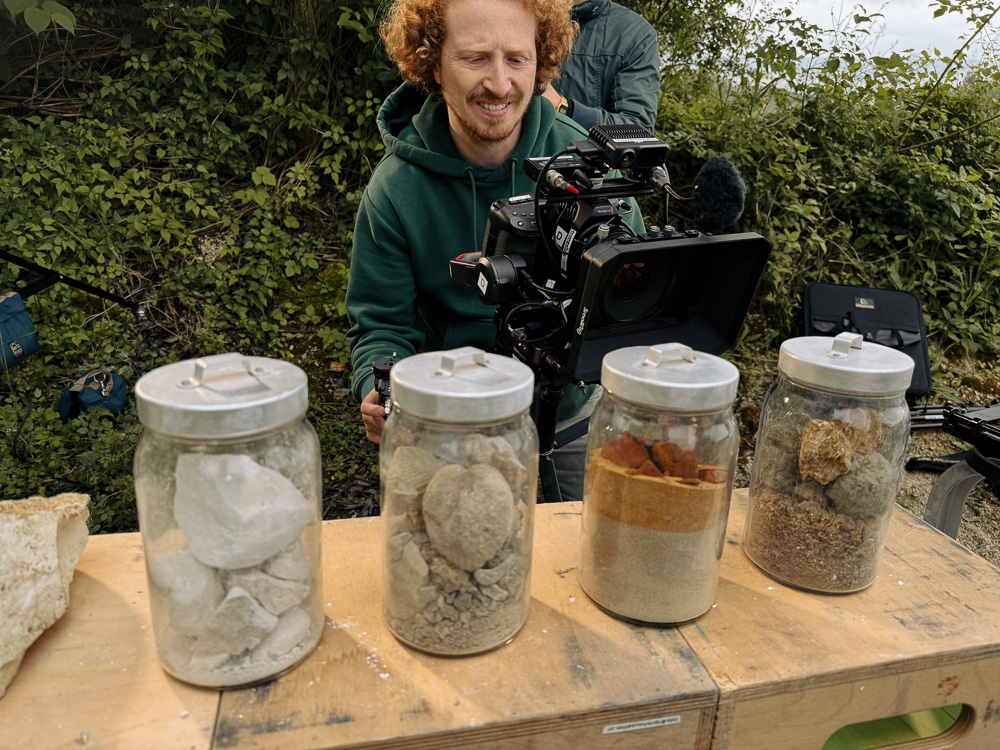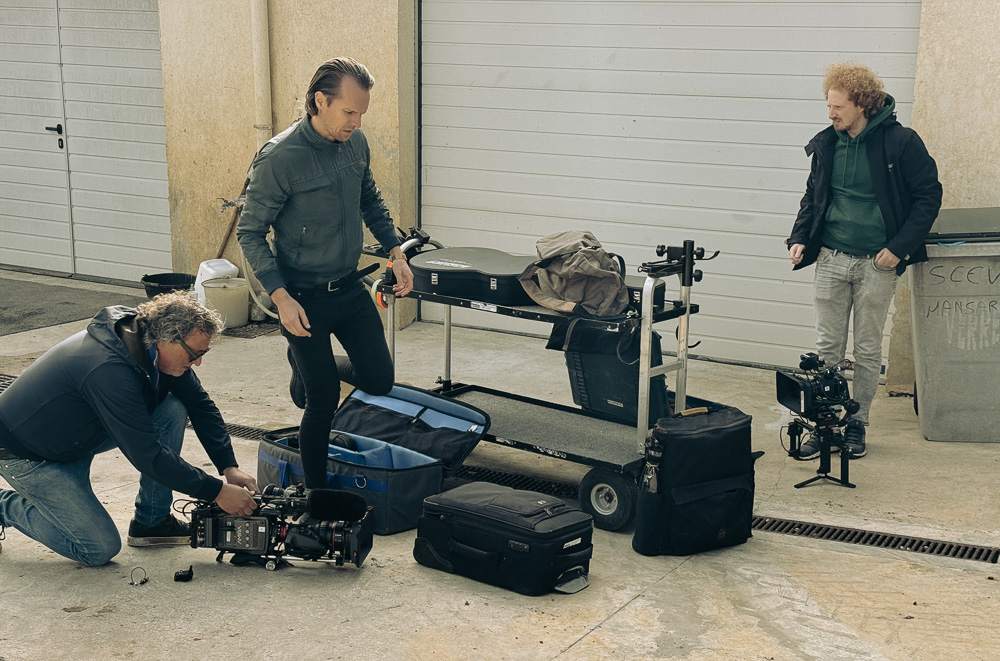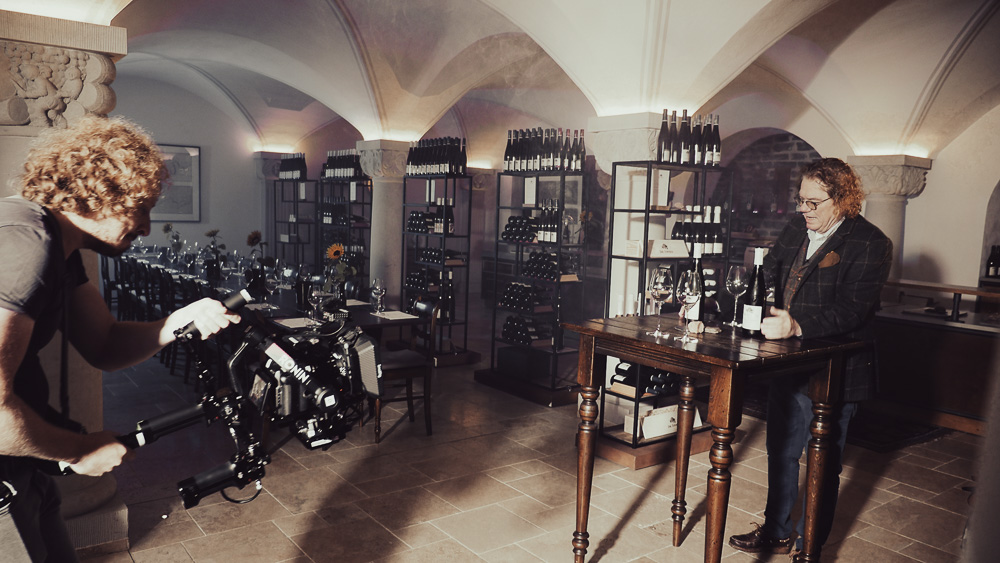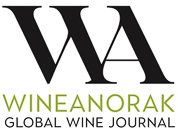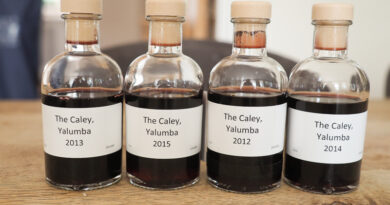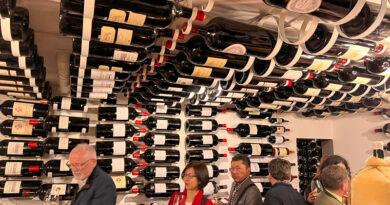Filming the science of wine
One of the most fun things I did last year was spend three weeks filming a TV series titled ‘The Science of Wine’.
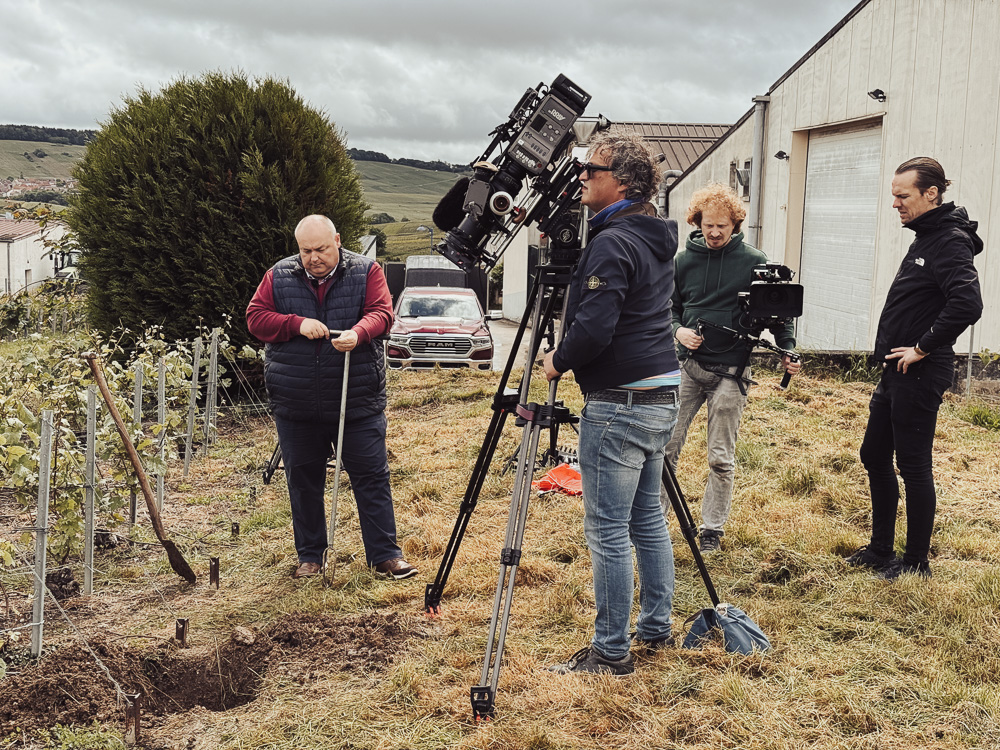
The idea for this came from a TV production company in the Netherlands called Farmhouse Films, who have a subscription channel called WinemastersTV. I first came across them when I did a day’s filming with them as a talking head on a program they were working on about Portuguese wines. It was a long day in a cold cellar in Arnhem, in December 2023. But the filming went well, and the director, Klaas de Jong, proposed doing a series on wine science with me as the presenter.
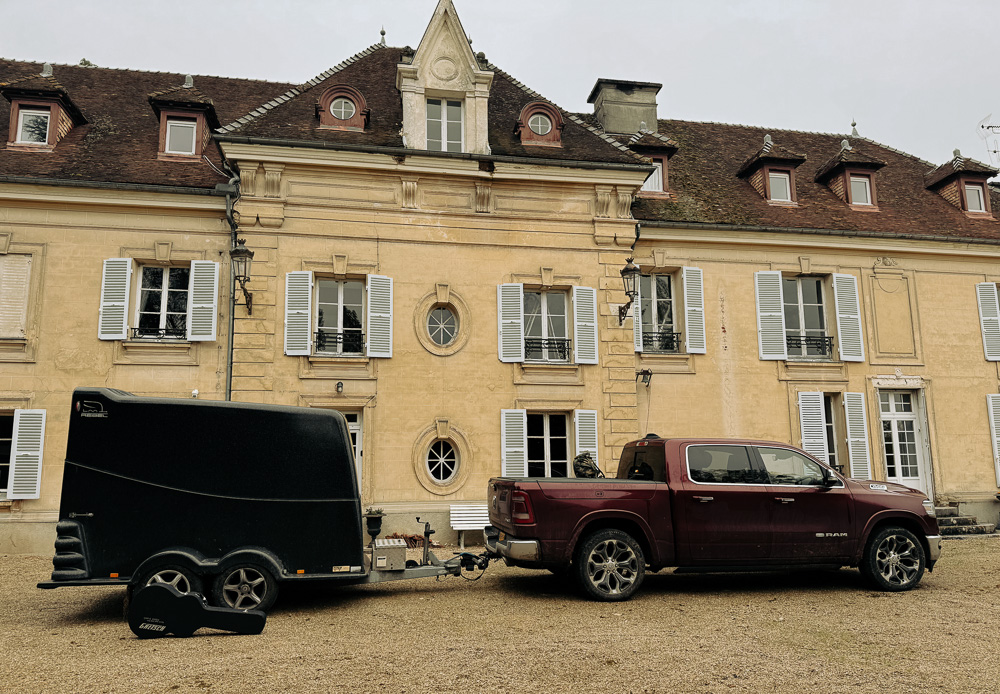
Klaas has had a long career managing bands and making films. His film work has a particular quality to it, and he brings this movie-level style and professionalism to his directing, filming and editing of wine programs.
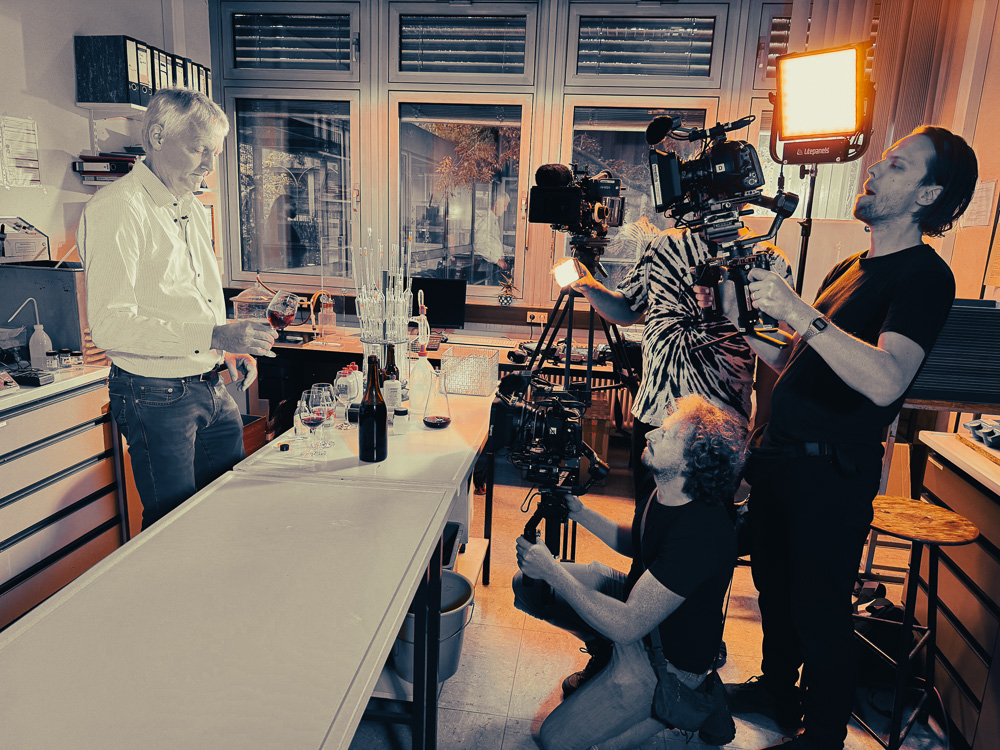
As well as putting the films up on WinemastersTV, he also sells them to the likes of Amazon Prime, Apple TV and other streaming platforms. One of his most successful films is The World’s Most Expensive Wine, which is carried by lots of airlines.

I was really curious when he approached me, but it didn’t take long for me to sign up. So far we have filmed five episodes, and next month we are going to shoot two more.

How does it work, and what’s it like filming? Klaas comes up with the idea and discusses it with me, and then he finds experts (usually scientists) and winemakers/winegrowers who we can film with.
The first episode we shot was in May 2024, in Champagne, titled Can you taste the soil in the wine? All the episodes begin with a question, which I introduce in a driving sequence, and then we use the next 25 minutes or so of the film trying to answer that question. We are budgeting 2.5 days of filming per 25-30 minute episode, which is tight. The first one took us four days, but it was the first time we’d worked together, and a lot of decisions were being made about how these programs should be filmed and styled.
Watch the trailer for The Science of Wine here
One of the things Klass wanted was for me to bring my guitar along, and that music would be part of the show. So I brought my blue Gretsch along, with a small Spark portable amplifier, and we recorded a music segment as well as all the wine stuff. This was to be a feature of all the episodes, and in each I made up a different piece of music on set and then recorded it properly when I got home. I also recorded all the filler music for the film.
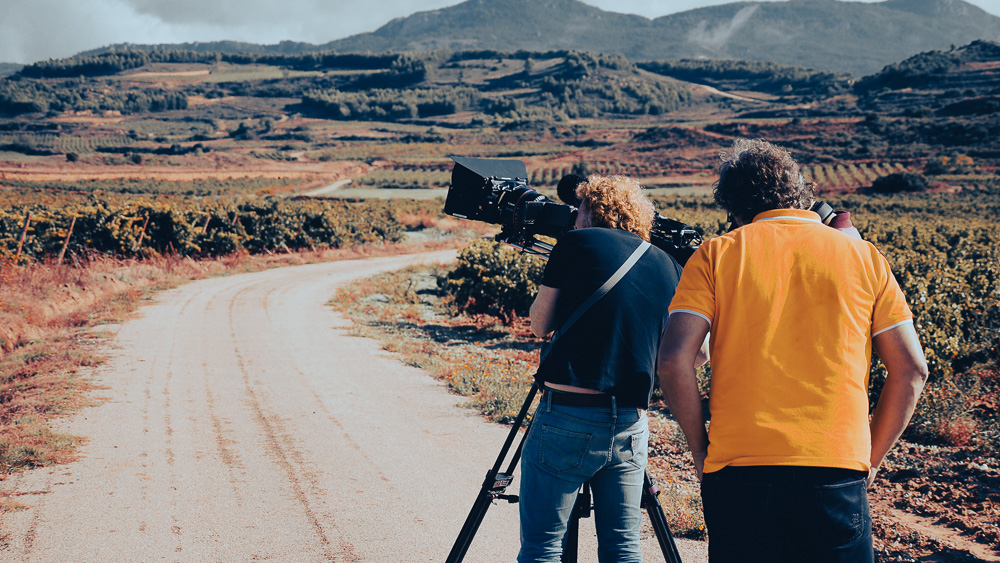
The films are set in various winegrowing regions in Europe. We can’t really film anywhere we can’t drive to because of the amount of kit needed to film professionally. Of course, you could do a film like this with just a couple of hand held cameras and basic lighting, but it wouldn’t look very interesting. We drove round in a huge Dodge Ram carrying a big trailer packed with kit. A lot of this was lighting, but there were also multiple cameras, lenses, rigs and tripods, too.
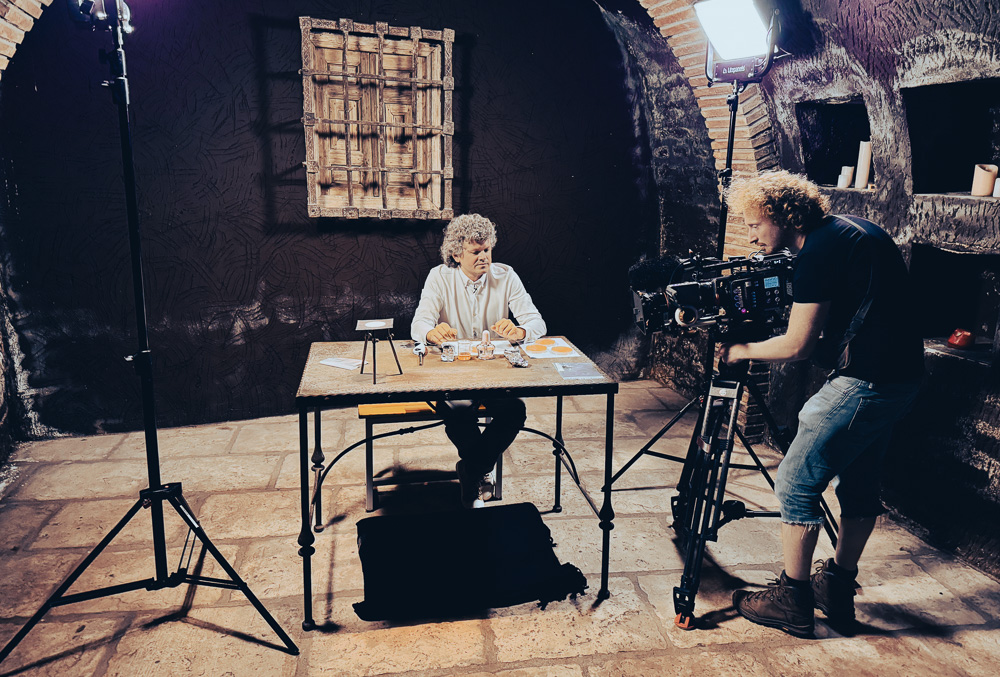
Plus smoke machines. Klaas is quite addicted to smoke machines, and has a big one for outdoor use and also a small one for working indoors. It does create quite a dramatic lighting effect.
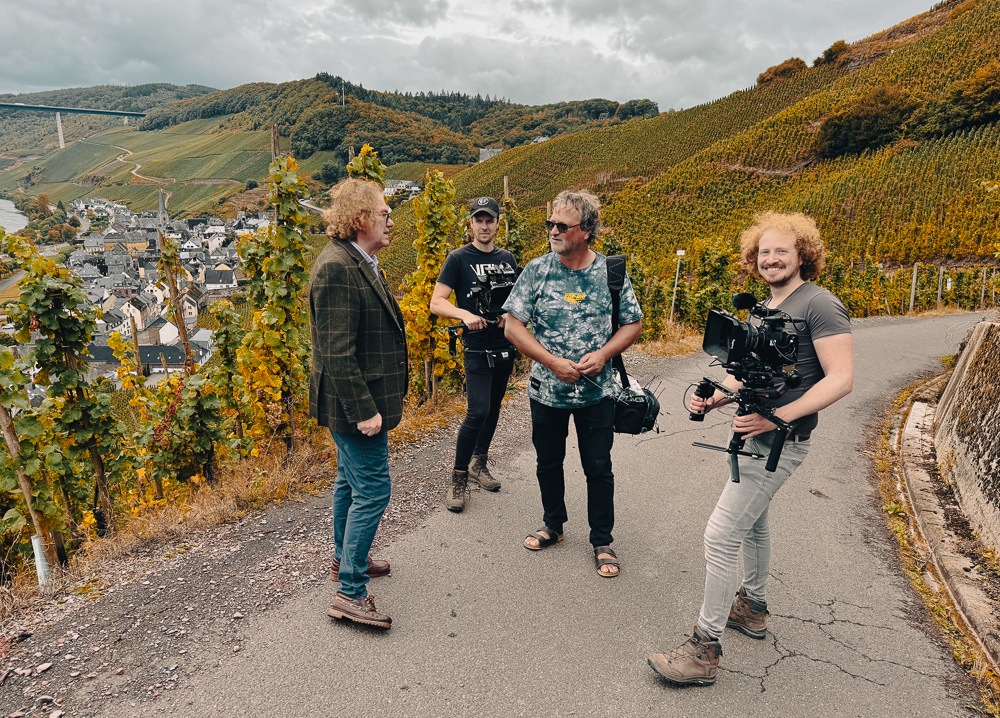
There’s a lot of driving involved. As well as Klaas and me, there are Klaas’ camera operators Diedrich and Wouter, who are extremely talented. What we were doing was often technically very challenging, and a lot of creativity is also involved. Without pushing the boundaries a bit, it’s very easy to end up with boring TV.
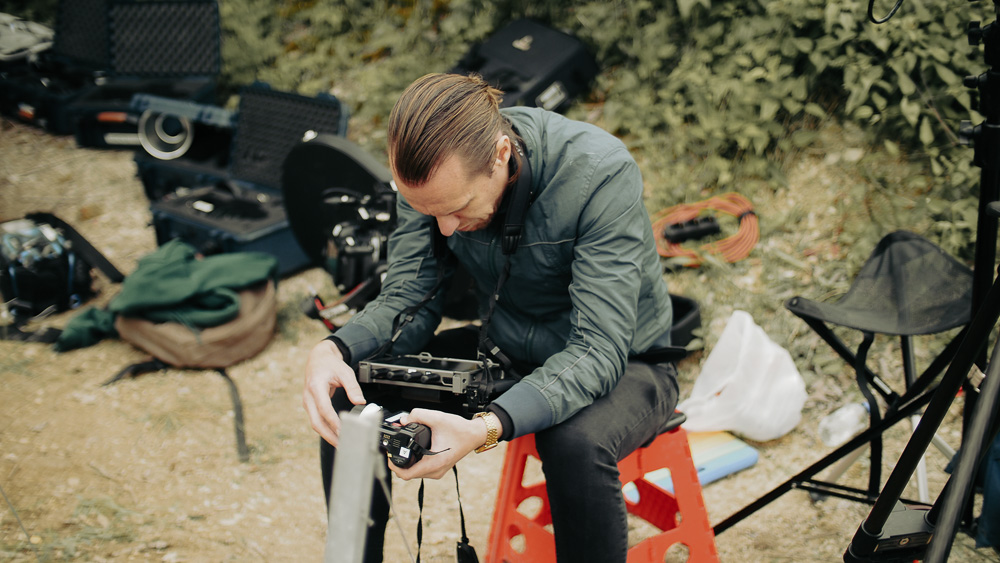
The four of us got on very well, which is a good thing, because the team dynamic is vital to the outcome. On the road there are early mornings, late nights, lots of time in the car, and then working under quite a bit of pressure to get things right as we deal with new people, new locations, and try to record everything we need so the editing stage can proceed without too many compromises caused by the lack of the right shots.
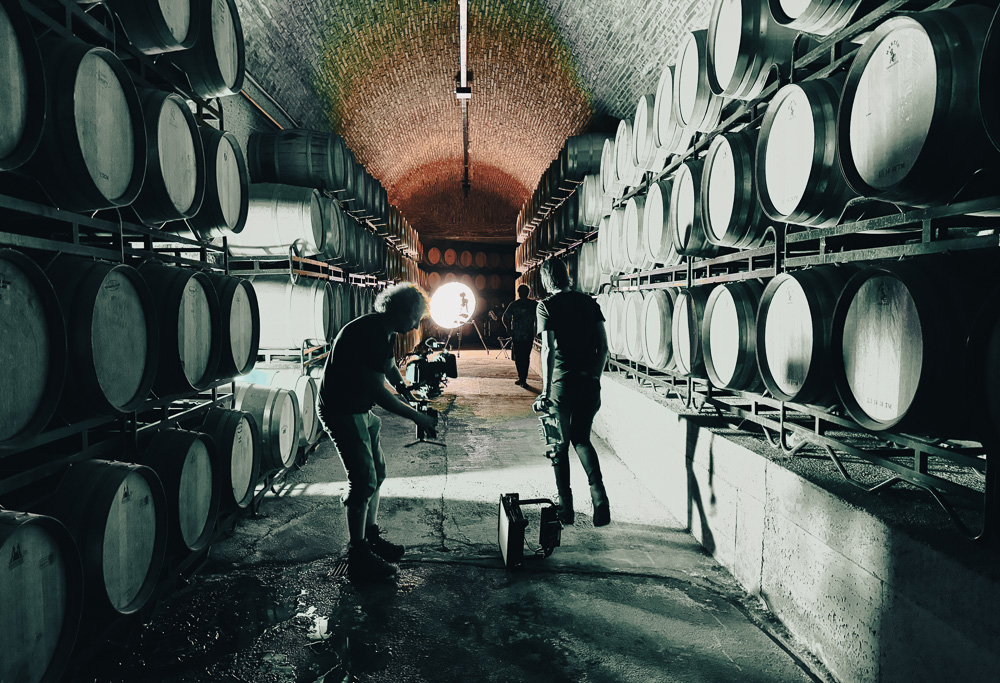
We weren’t working from a script. Klaas has an idea of what we need to record, and Diedrich and Wouter know what’s needed in terms of shots. When I was presenting, I had a general idea of what topics I was going to cover, but I improvised on camera, which puts a lot of pressure on me, but when it works it’s fresh and energetic, because it’s not some learned lines. You can be too polished and smooth and then you end up with something that’s very daytime TV.
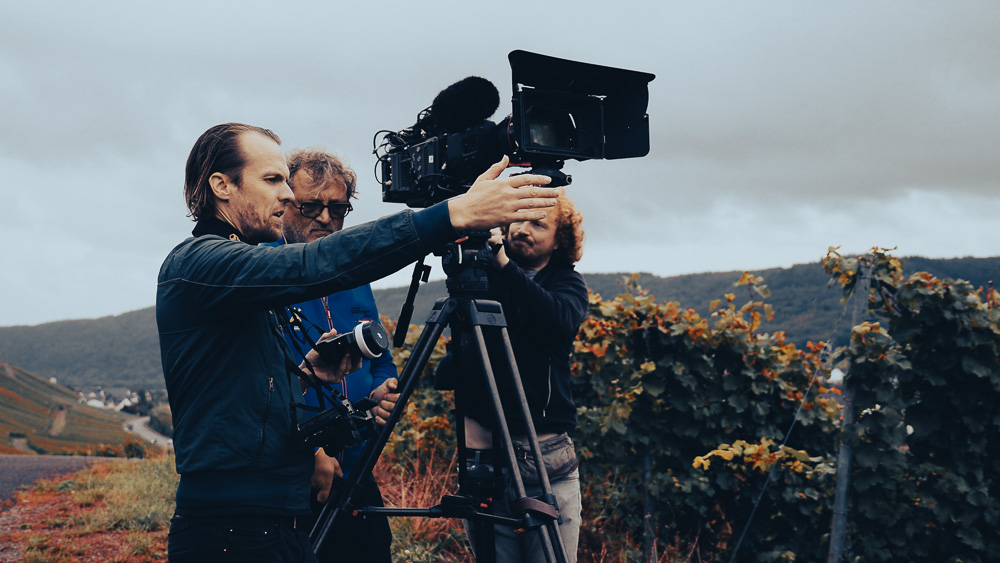
How does the filming work? We usually arrive where we are going to film at night, and then start the next morning. We’ll begin with the expert/winemaker interview segments, in a winery or a research station or a vineyard. We meet the people we are working with and have a chat, and then we scout the ideal locations to film in. Then it’s unloading and setting up, and this can take a long time. Usually there will be lights to set up, and then fixed camera(s), and then the handheld camera rig. The sound also needs sorting, and that usually means giving everyone who’s going to be filmed a wireless radio transmitter and lavelier microphone, and the recorder is left running all day, so all the off the camera comments and chats are also recorded (this could be dangerous). The cameras and sound recorder all run with a time stamp, so at the editing stage it’s possible to match everything up.
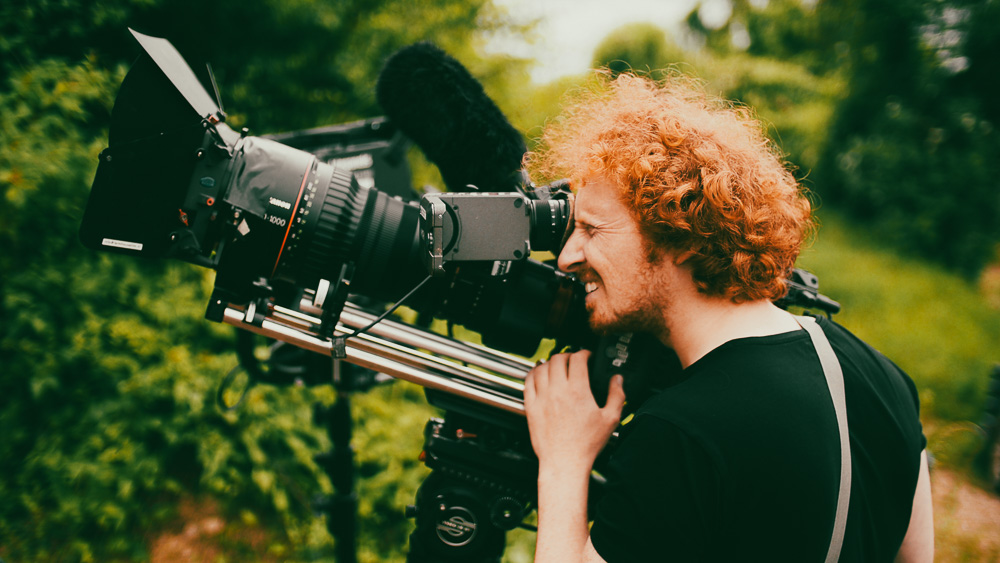
Then we start shooting. As well as interview segments, there are linking sequences, macro shots, and people entering and leaving. Often a couple of rehearsals are needed when other people are involved, as they might not be used to being filmed.
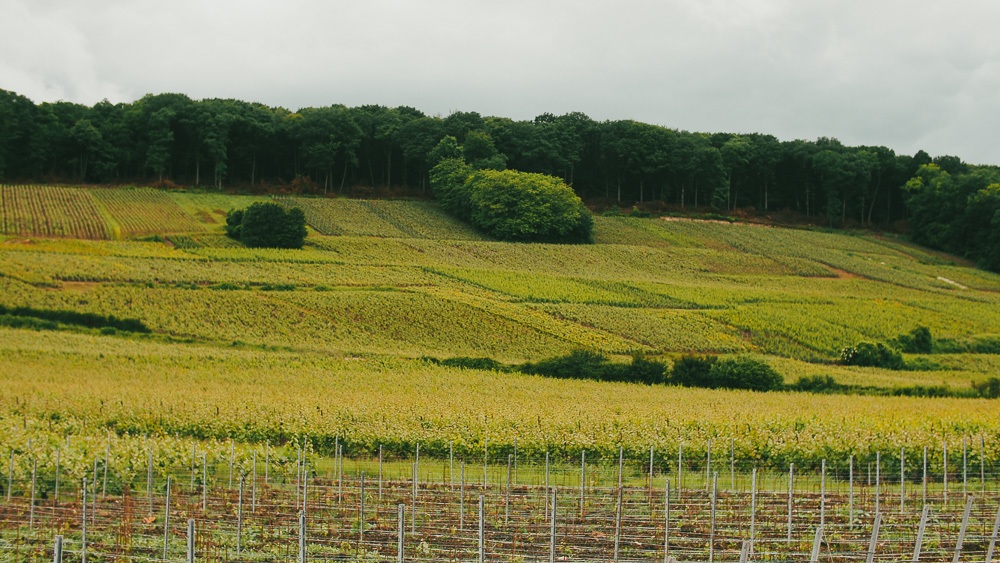
Then we might film some driving sequences, and to go with these, some drone shots. Klaas has a rig that fits on the outside of the drivers door, so you can speak to the camera as you are driving. Because the trailer is attached, we often have a limited amount of road to use that’s suitable, and then we need to turn around. I can’t reverse a trailer, so this can be complicated. We did some filming in vineyards, too, and often in quite precarious locations. During these sequences I’m driving very slowly so I don’t run out of road, and I’m trying very hard to get the first take right.
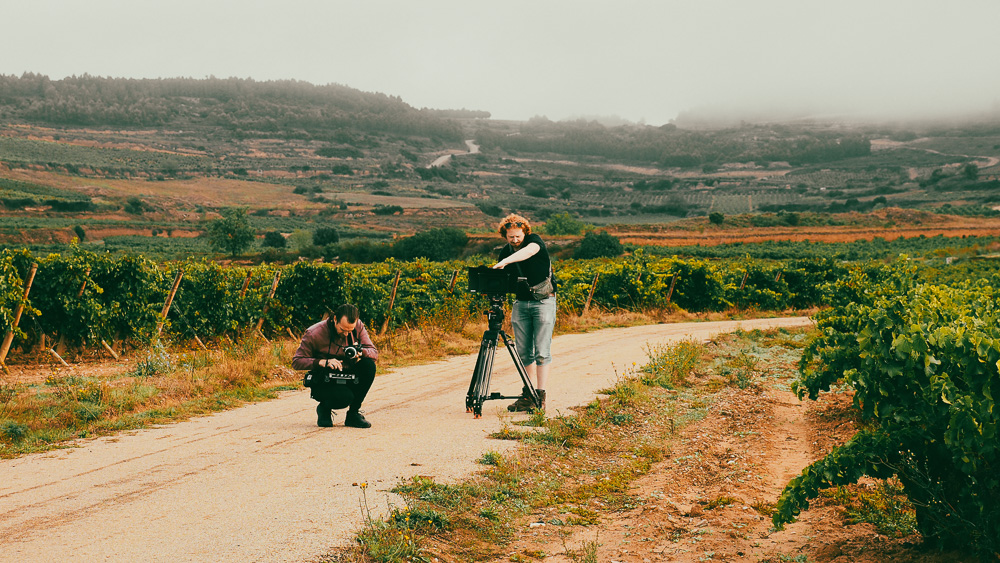
Life is so much easier if you can get first take right. It’s not always possible. You have to be very honest with yourself about whether what you have done is good enough. Apart from stumbling with words, a lot has to do with energy. It’s very important not to be boring or flat. Second take is often needed. If you have to do take 3, it can be challenging to not feel under pressure. Fourth take is very boring and you are aware you are wasting everyone’s time.

Of course, things don’t always go to plan. The weather can be an issue. In Champagne we dug a hole in the wrong place: in the neighbour’s vineyard, not our hosts. The grower turned up but was quite chilled once we apologised and explained what we were doing. Setting up filming equipment often gets peoples’ attention, and they become very curious about what we are doing.
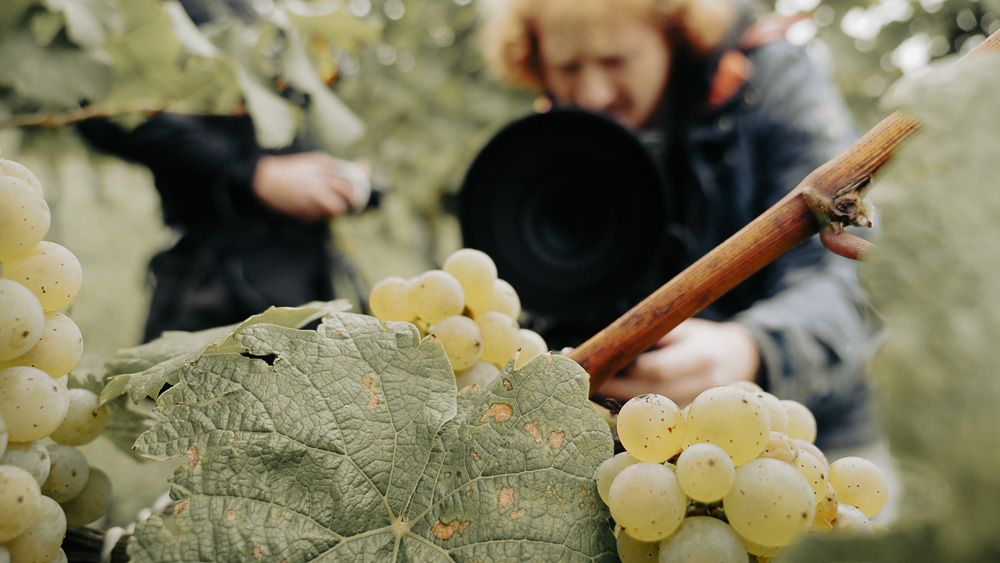
In the second block of filming I met the crew in Bordeaux, and filmed there, then drove to Gaillac in the southwest to film with a scientist at a research institute and with a nursery, and from there headed to Rioja for a few days. Atfer this we went to Germany, where we filmed with scientists at the Weincampus in Neustadt in the Pfalz, as well as a nursery, and then headed to the Mosel, where we spent a few days with Ernie Loosen in Bernkastel. We went back to Neustadt, then back to the Mosel, and finally after two weeks on the road I flew home from Dusseldorf, guitar in hand.
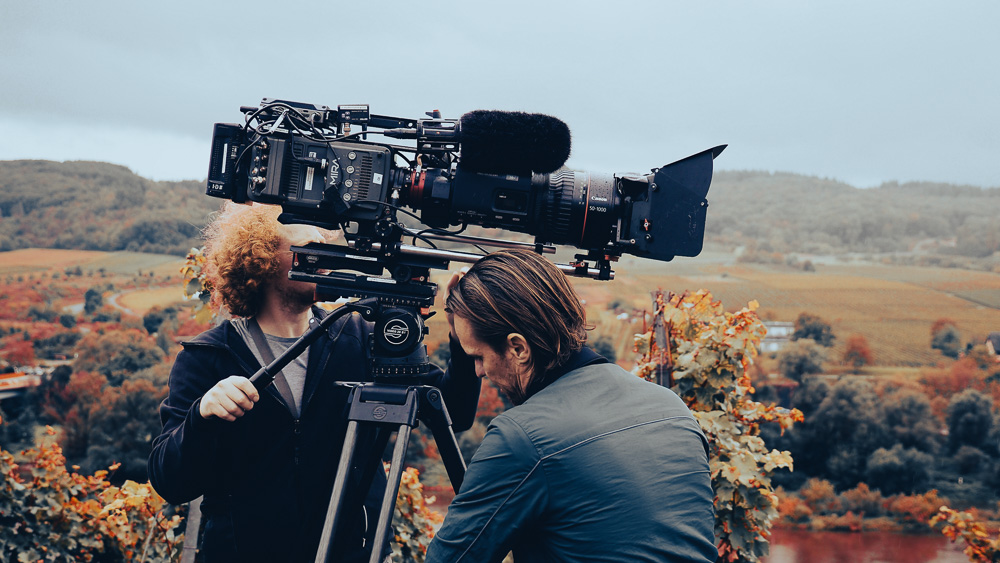
So, episode one is now live, and there are four more to come. The next two episodes will be filmed in April in Germany, and I’m looking forward to this quite a bit. It’s intense work, it’s physically and emotionally quite draining, but it’s also very rewarding when you see the results.

